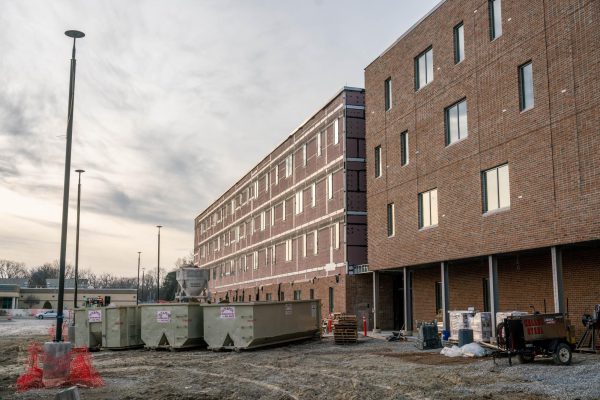Decade of Student Activism Preceded Oberlin’s Divestment from Apartheid-Era South Africa

Oberlin students march out of Mudd.
Throughout the 1970s and 1980s, college students across the country protested and demanded their colleges divest from companies that were doing business with South Africa due to ongoing apartheid.
This concern led to the creation of the Sullivan Principles, which were aimed at governing American companies’ investments and operations in South Africa. Named for Reverend Leon Sullivan, the principles included the elimination of workplace discrimination, pay equality, education, and sponsoring social programs and community investment. The hope was that companies signing onto the principles would help undermine apartheid on a socio-economic level.
The principles proved divisive. While they were heralded by some political and industry leaders as being a constructive way for U.S. businesses to engage with South Africa, activists saw them as a way for U.S. businesses to limit the effectiveness of corporate divestment. Oberlin students at the time also raised their concerns with the principles in a Nov. 16, 1978 open forum with the Board of Trustees.
The Oberlin administration’s policy was that it would not own stock in any company which had 10 percent or more of its worldwide sales in South Africa or did not comply with the Sullivan Principles. However, many students felt that the College’s mere presence in South Africa guided in providing the apartheid government with financial stability.
On April 6, 1979, students protested the College’s stance at a meeting of the Board of Trustees on the fourth floor of Mudd Center. As a result of the protests, 105 students were charged with “disrupting the essential operations of the College.” The charge carried the maximum penalty of expulsion, but the students were finally given a letter of reprimand.
Student protests continued throughout the 10-year period between the initial open forum and the College’s decision to divest. In 1986, students were charged on the same grounds as seven years prior when approximately 200 students disrupted another Board of Trustees meeting on the fourth floor of Mudd Center.
A Review article recounts the 1986 event (“Oberlin 59 Face Charges; Students Gain Wide Support,” The Oberlin Review, Feb. 6, 1987) written by Rachel Seidman.
“When students began banging on the windows of the Goodrich room where the meeting was being held, Dean of Students George Langeler repeatedly requested them to keep silent,” the article reads. “After several outbursts, during which time the trustees moved their meeting to an inner room, Langeler collected the IDs of 59 students.”
By February 1987, however, the charges were dropped due to the General Faculty voting to urge Langeler to that course of action.
In March of 1987, hundreds of students occupied the Cox Administrative Building. Their protest was expansive, spanning three days and having up to 250 students participating at its busiest times.
Students filled as many offices as possible and hung signs of protest, such as the African National Congress flag, from windows. Students organizing the protest collected more than 300 student IDs in an effort to make sure no student could be singled out by the College the way the Oberlin 59 were.
Over the three day duration of the sit-in, the administration asked the students to vacate some of the offices, but the students did not comply, eventually leaving Cox only to move the protest closer to the Board of Trustees meeting.
Oberlin students wanted the administration to divest completely from investments in companies doing business with South Africa. Just a few hours after students ended their sit-in of the Cox Administrative Building, the Board of Trustees began talks to divest from South Africa.






